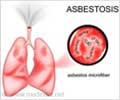Hypoxic Respiratory Failure ( HRF ) develops when newborns’ lungs cannot deliver enough oxygen to their body. It can happen to full-term and
Hypoxic Respiratory Failure ( HRF ) develops when newborns’ lungs cannot deliver enough oxygen to their body. It can happen to full-term and near-term infants.
There is no prenatal test or other way to predict which infants will develop HRF, so there is no known way to prevent the condition. The standard treatment is a surgical procedure that involves cutting the infant’s jugular vein and putting the baby on a heart-lung machine to oxygenate the blood. The surgery can cause severe complications.A study finds a new treatment for hypoxic respiratory failure is not only more effective and less invasive, but it also costs less.Recent research has shown giving the infant nitric oxide as an inhaled gas is also effective for babies with HRF.The study shows inhaled nitric oxide is less expensive than the surgical option. In fact, for every 100 newborns with HRF, treatment with inhaled nitric oxide could save more than $440,000.Researchers conclude the savings could range from $1,880 per child to $4,400 per child.
Researchers of the study say ,“Many therapies and life-saving equipment readily accepted by society are quite costly. Perhaps now that we have hard data on the cost savings this treatment provides, insurers will do a better job of covering it.” and they hope that this study would encourage everyone about the importance of this therapy.






